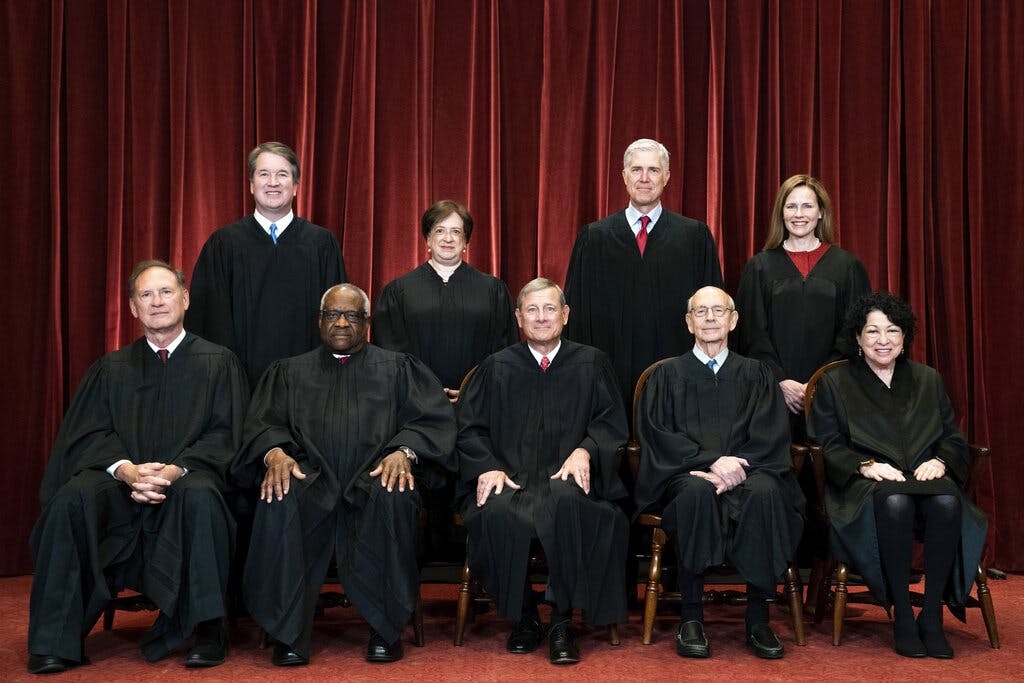After Roe v. Wade, the Battle of Abortion Moves to the Legislatures
America’s national parchment is found to contain ‘no constitutionally guaranteed right to an abortion.’

The five-to-three-to-one decision of the United States Supreme Court striking down Roe v. Wade will, though it was widely anticipated by the leak of Justice Samuel Alito’s draft majority opinion, send shockwaves through American life and ignite a scramble in legislatures across the country to adjust their laws as voters see fit.
The decision in Dobbs v. Jackson Women’s Health — that there is no constitutionally guaranteed right to an abortion — hewed closely to Justice Alito’s draft, leaked in March to Politico. Justice Alito was joined by Justices Amy Coney Barrett, Neil Gorsuch, Brett Kavanaugh, and Clarence Thomas. Chief Justice Roberts concurred in the judgment.
The ruling comes at the end of a week that saw the Nine hand down long-awaited rulings on gun rights, religious liberty, and criminal law. It cements the impression of a court that has undergone seismic change, and is setting a new constitutional course. It means, in the meantime, that Roe is a dead letter.
In Dobbs, Justices Stephen Breyer, Sonia Sotomayor, and Elena Kagan did dissent, in flashes of eloquence and anger. The majority, though, eschewed a narrow ruling, thundering that Roe “was egregiously wrong from the start. Its reasoning was exceptionally weak, and the decision has had damaging consequences.”
The majority opinion goes on to reason that “procuring an abortion is not a fundamental constitutional right because such a right has no basis in the Constitution’s text or in our Nation’s history.” Justice Alito writes that in overruling Roe, the court returns “that authority to the people and their elected representatives.”
With one eye on how this seismic decision will be received, Justice Alito writes, “we do not pretend to know how our political system or society will respond to today’s decision overruling Roe and Casey.” A barrier, though, has been up for weeks around the court, where crowds have gathered in anticipation of protest.
Chief Justice Roberts, writing in a concurrence, advocated “a more measured course,” and wrote that “both the Court’s opinion and the dissent display a relentless freedom from doubt on the legal issue that I cannot share.” He would have trimmed the majority’s sails and issued a more modest ruling.
Another concurrence, by Justice Clarence Thomas, urged the court to go yet further, advising that “in future cases, we should reconsider all of this Court’s substantive due process precedents, including Griswold, Lawrence, and Obergefell.” Those cases, sourced from a “right to privacy” that is now under legal fire, concern the right to contraception, consensual sexual relations, and marriage.
The dissenting justices argued that the court’s precedents “have protected the liberty and equality of women,” a protection that they view as now having been undone by a decision that holds that “from the very moment of fertilization, a woman has no rights to speak of.”
The dissent lambasts the holding of Dobbs as one that “forces” a woman “to carry out the State’s will, whatever the circumstances and whatever the harm it will wreak on her and her family.” The three justices accuse their colleagues of “abandoning” stare decisis, meaning fealty to precedent.
“Young women will come of age with fewer rights than their mothers and grandmothers had,” the dissenters lament. We now enter an era where, the three justices write, “States may regulate abortion for legitimate reasons, and when such regulations are challenged under the Constitution,” it is lawmakers, not judges, who will hold the upper hand.
Justices Breyer, Sotomayor, and Kagan sign off with this valedictory: “With sorrow — for this Court, but more, for the many millions of American women who have today lost a fundamental constitutional protection — we dissent.”
Now begins the next chapter of what Justice Alito calls “a profound moral issue on which Americans hold sharply conflicting views.”

